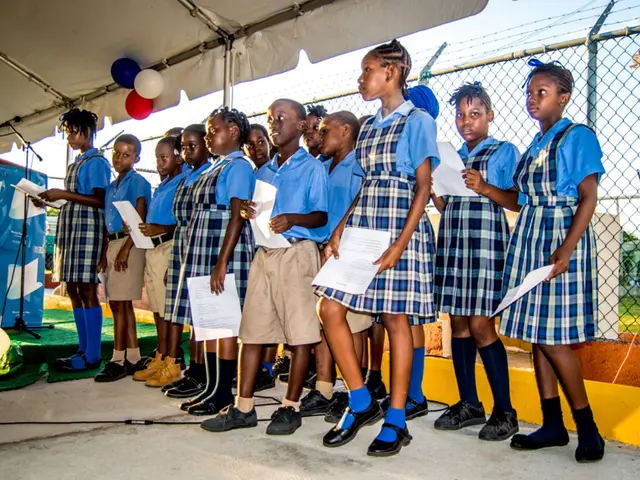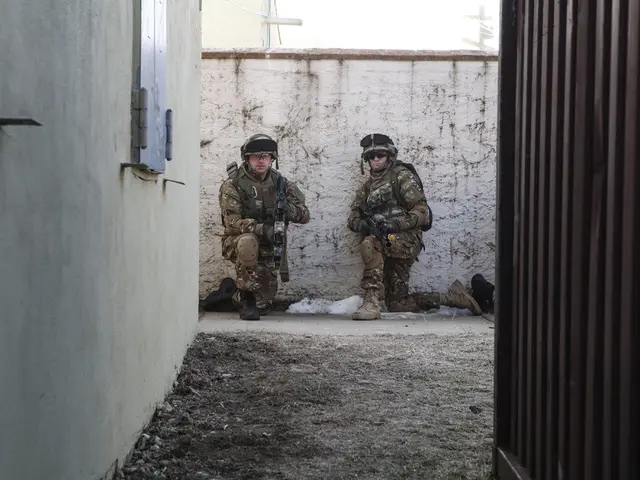Progressing steadily: Evaluation of the A321XLR in flight mode accelerates
Airbus A321XLR Undergoes Comprehensive Testing Ahead of Commercial Debut
The Airbus A321XLR, a long-range version of the popular A321neo, is currently undergoing an extensive test programme to evaluate its flight control system evolutions. Four test aircraft are part of the development programme, with the first two, FTV1 (MSN11000) and FTV2 (MSN11058), already equipped with the full suite of flight-test instrumentation and engineer interactive stations.
FTV1 and FTV2 are primarily focused on the aircraft's technical systems, updated flight controls, and handling and performance. Notable flight-physics-related changes on the A321XLR include a simpler single-slotted inboard flap system, an electronically signalled "e-Rudder", and uprated landing gear, wheels, and brakes.
The third A321XLR test aircraft, FTV3 (MSN11080), is currently being fitted with a 'lighter' FTI installation and will focus more on maturity testing of the passenger cabin interior elements and route-proving for customers. FTV3 will also demonstrate the aircraft's operation on the expected route scenarios for its customers, especially demanding ones to validate the aircraft's operation at the extremities of take-off weights, range, runway constraints, ground temperatures, and weather conditions.
The A321XLR needs to carry more fuel, which requires uprated landing gear and braking systems, and aerodynamic changes to the high-lift system and reprogramming of the flight control system. The third A321XLR, MSN6839, has been retrofitted with several important new features designed for the -XLR, including the new inboard flap system, making it aerodynamically equivalent to the -XLR once the landing gear is retracted. MSN6839 has performed 'velocity minimum unstick' (VMU) tests, the absolute minimum speed at which an aircraft can take off, which are determinants of the operational takeoff speeds used by airline pilots.
The on-board FTI suite in the test aircraft can record and process up to 80,000 lines of data, fed by more than 1,000 physical measurement transducers installed throughout the aircraft. By the fourth quarter of this year, all three A321XLR development aircraft will be flying actively.
The completion of the flight testing and ground lab testing activities, and the submission of all final documents to the airworthiness authorities by the end of next year, will allow for the validation and certification of the complete A321XLR aircraft. The A321XLR certification flight-test campaign was completed prior to its type certification, which the aircraft received from the European Aviation Safety Agency (EASA) on July 19, 2024, and from the Federal Aviation Administration (FAA) on October 2, 2024.
The first delivery of an A321XLR to an airline (Iberia) occurred on October 30, 2024. American Airlines, a major customer, plans to take delivery of its first A321XLR on July 29, 2025, but the aircraft will initially be ferried to Czechia for storage due to interior fitting delays amidst supply chain issues. American aims for a commercial debut of the A321XLR late in 2025, though delays may affect this schedule.
In summary, the key certification flight-test activities took place prior to mid-2024, involving multiple test aircraft for range and configuration validation, culminating in the EASA and FAA type certificates by October 2024. The campaign marks the groundwork for deliveries and commercial operations expected to ramp up through 2025.
The development program for the Airbus A321XLR involves testing across various sectors, including the aerospace industry, technology, and finance, as each test aircraft focuses on different aspects. For instance, FTV1 and FTV2 are primarily assessing the aircraft's technical systems and updated flight controls, while the third test aircraft, FTV3, is focusing on mature testing of the passenger cabin interior elements and route-proving for customers within the finance sector. On the other hand, the fourth test aircraft, MSN6839, has been retrofitted with new technology features for the A321XLR, such as the inboard flap system.








